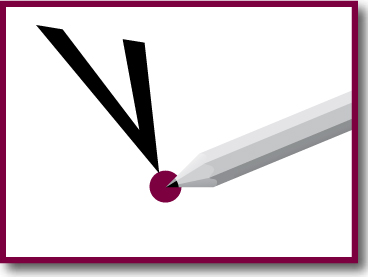Another of our new Contributing Editors is Vlada Limic, Centre national de la recherche scientifique, Paris. She introduces her new column series, Vlada’s Point:

Most of my contributions here will be devoted to topics in communication. More precisely, I am interested in criticizing several aspects of our scientific communication, and especially those that could be much improved with a little (or perhaps with a bit more) joint effort.
As the name of the column suggests, it is my point of view that will be predominantly given. Due to numerous sporadic yet frank discussions with colleagues of varying age and stature, I am convinced that my opinions are typically shared, admittedly not always by the majority. Your feedback (preferably in writing) will be always much appreciated, regardless of your standpoint, and I intend to repeatedly remind you of this fact. Moreover, I will happily include in my column any of your constructive remarks (either verbatim or altered in the way we would both find acceptable) on any of my preferred topics, and possibly even on a related topic that I would not otherwise address.
Before presenting my first case, I wish to introduce (or recall) a communication tool, which is not widely known in our community but seems quite useful. I learned of it only recently, from a group of elementary and high schools teachers that work in the big city nearby. They were concerned about an increase of (various forms of) violence in their respective schools, and advocated the use of Nonviolent Communication (popularly abbreviated by NVC, or by CNV in French) in and out of classroom. The four components or steps of NVC are very simple to remember, especially with body cues that I am about to share, and also quite simple to put in practice. If you wish to read more about it, Wikipedia is a good place to start. The order of the four steps is apparently not important, however it is important to include them all as part of one’s NVC statement. The reader will likely note that these are quite natural, and undoubtedly frequently implemented in conflicts (of opinions, interests etc.). However, presenting all the components to the opposing side in a unified statement is an essential part of the NVC, and possibly the main reason why it is advocated as a good tool for conflict resolution.
In short, an NVC statement consists of: describing the present situation in a pure facts (body cue: head) format, then separately expressing one’s own feelings (body cue: chest) resulting from this state or condition, then again separately expressing one’s needs (body cue: stomach) that are not being satisfied, thus leading to the current discord. The final step is possibly the most demanding on the maker of the NVC statement. They need to propose an action or a chain of actions (body cue: legs) that would make them happy (i.e. resolve the discord).
So far so good, but what happens if the other side is not listening, or if they simply hear things differently? Here is a variation of the technique that should accommodate this possibility. Suppose for simplicity that there are two people (person A and person B) in strong disagreement over something. One of them, say person A, starts with their NVC statement. Ideally they should be able to finish it without being interrupted. Then the listener (the opponent, person B) repeats what person A just said. It is important that this repeating is done as closely as possible to the original statement—rewording may lead to additional misunderstanding or manipulation—regardless of B’s thoughts or feelings on the matter. Person B will anyhow shortly be given an opportunity to describe the same situation in their own words from their own perspective. It may be easier to do this exchange (from person A to person B) for each of the four components separately, meaning for example that person A states the facts, and person B repeats this statement, then person A describes their feelings, and person B repeats this description, and so on. After this is completed, person B is offered to make their own NVC statement on this issue, and now person A takes the active listener role, committed to repeat what they hear.
Provided sanity, honesty and basic good will exist on both sides, by practicing over and over if necessary these two people are bound to reach an agreement that improves their joint situation. Try it yourselves, and you shall see! Our professional and private lives are undoubtedly filled with various opportunities for practicing NVC.
My space here is running out. At least I have room to announce my next topic of interest: the Workshop. The typeface is modified on purpose to indicate the way in which I critically view it as an institution. Next time I intend to explain in detail my profound disappointment with a typical representative (unfortunately, typical = overwhelming majority here) of this scientific meeting format. Then I will present (possibly in the subsequent issue) an idea of how the Workshop could be organized. The latter point is more than an idea! In fact, it concerns a project that I have strongly wished to make happen for some time…
Comments on “Vlada’s Point: The Introduction”